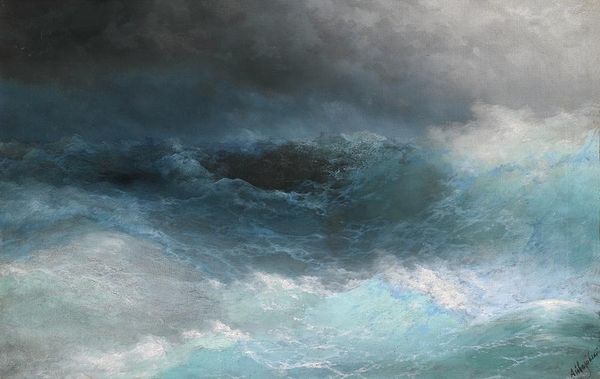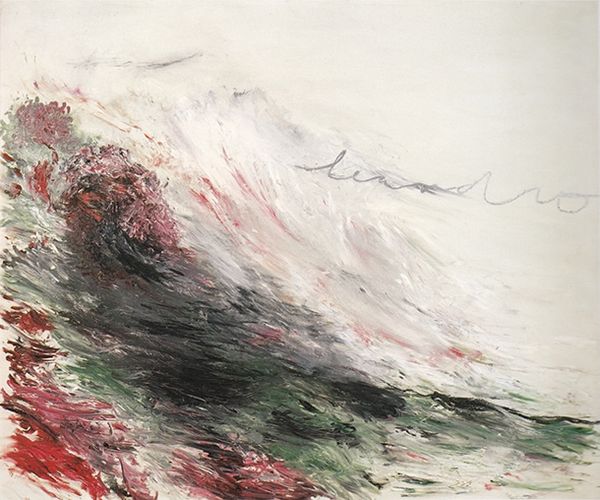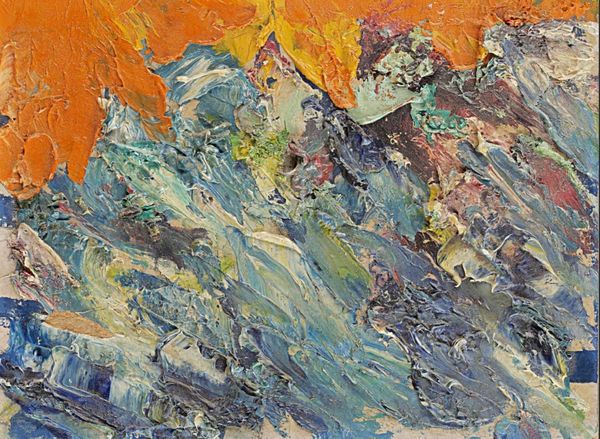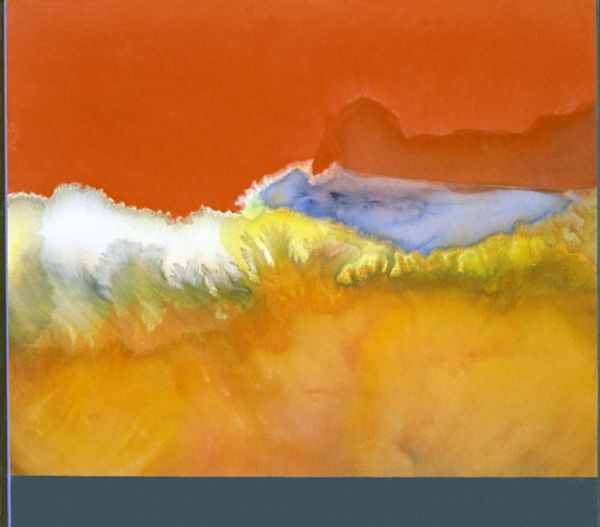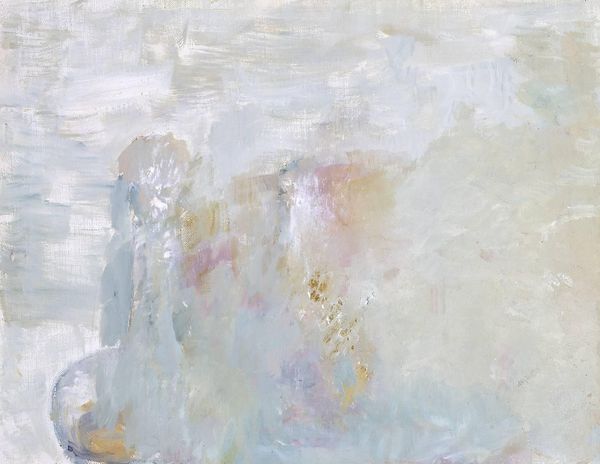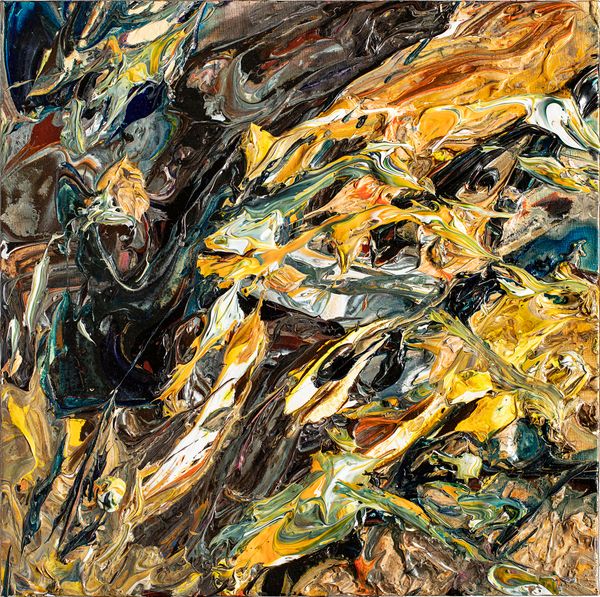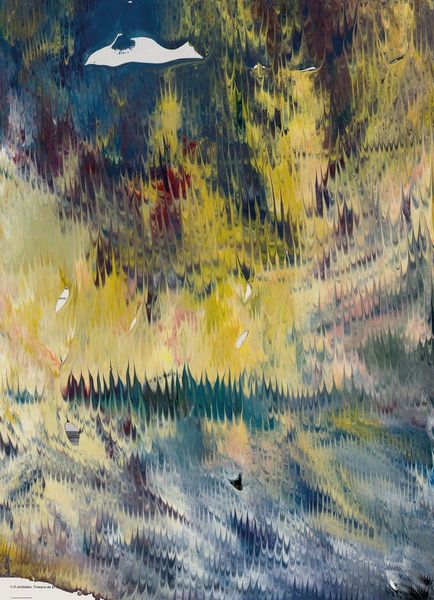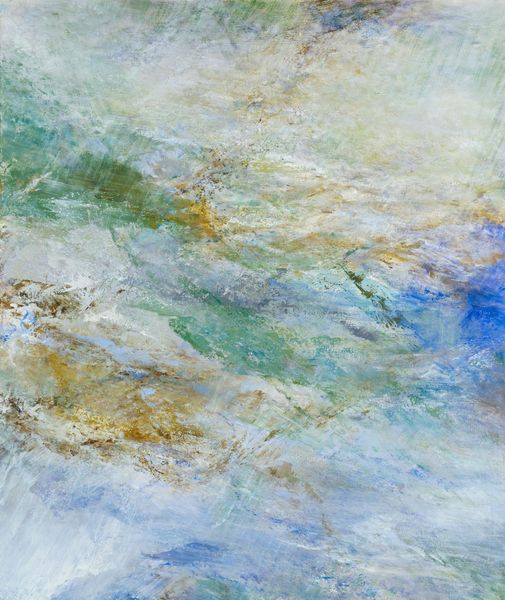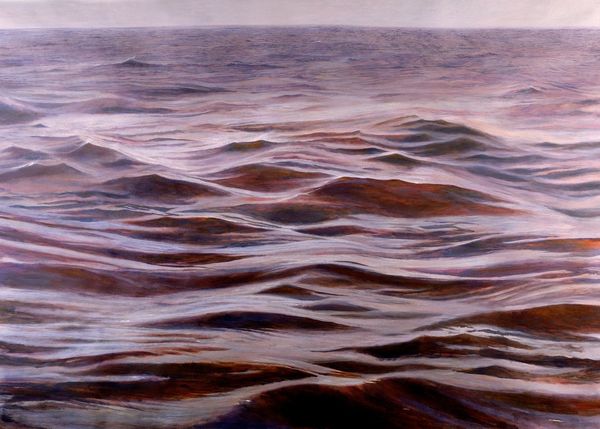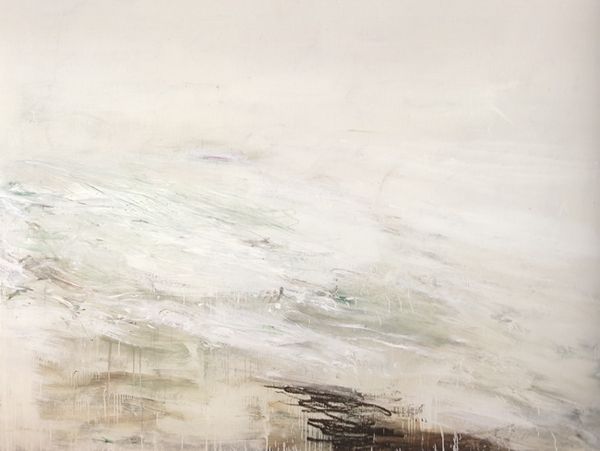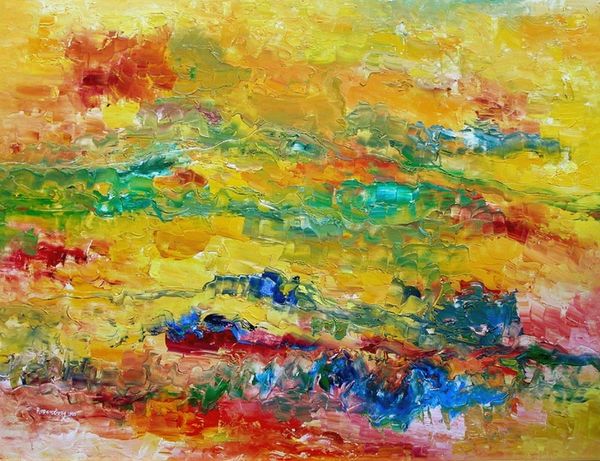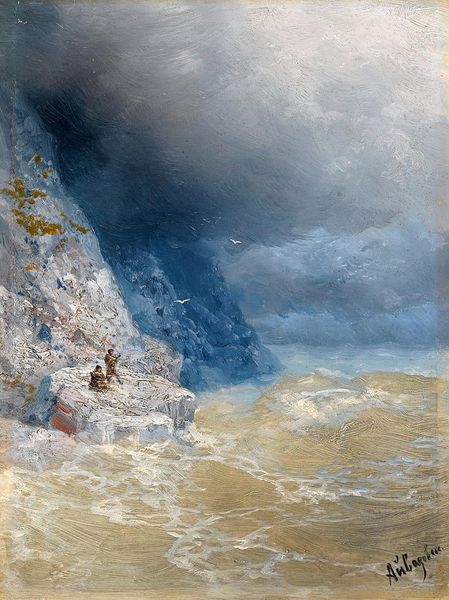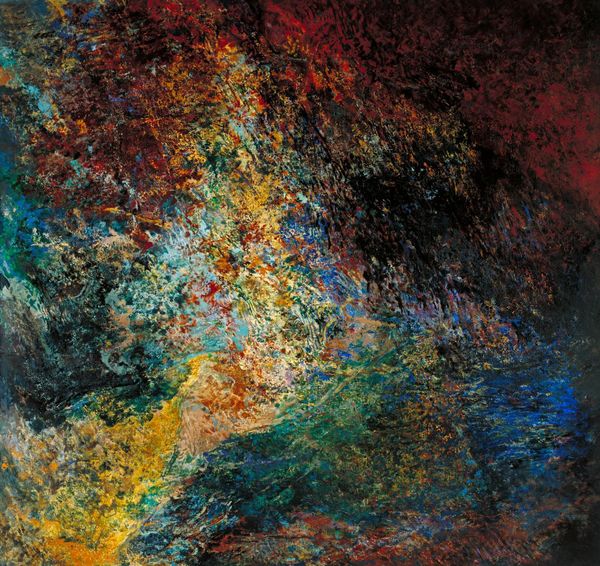
Dimensions: support: 1365 x 1092 mm
Copyright: © The estate of Edward Middleditch | CC-BY-NC-ND 4.0 DEED, Photo: Tate
Editor: Here we have Edward Middleditch's "Dead Chicken in a Stream," held at the Tate. The swirling paint makes the chicken and water almost indistinguishable. What do you make of this piece? Curator: The materiality speaks volumes. Middleditch's thick paint application and the sheer scale – over a meter tall – elevate what could be a mundane subject. It draws attention to the physical process of painting itself. What does the subject matter say about value in art? Editor: So, it's less about the chicken itself and more about how the artist has transformed it through his labour? I see it now. Curator: Precisely! Considering the context of post-war Britain, what does this treatment suggest about our relationship with nature and the food chain? Editor: Interesting. I had never considered how the way art is made could shape our perception of everyday things like this. Curator: And that’s the point, isn't it?
Comments
tate 8 months ago
⋮
http://www.tate.org.uk/art/artworks/middleditch-dead-chicken-in-a-stream-t00641
Join the conversation
Join millions of artists and users on Artera today and experience the ultimate creative platform.
tate 8 months ago
⋮
This was painted in Sussex early in 1955 and is one of three paintings Middleditch made at about the same time showing a dead chicken caught in a flooded stream. In 1954 he had first painted water, which was to become a recurrent image, with two powerful paintings of Sheffield Weir, one of which is in the Tate Gallery's collection. These, it has been suggested, concern death and drowning and this theme may have been continued into the next year when Middleditch painted images of dead birds in water. Gallery label, August 2004

